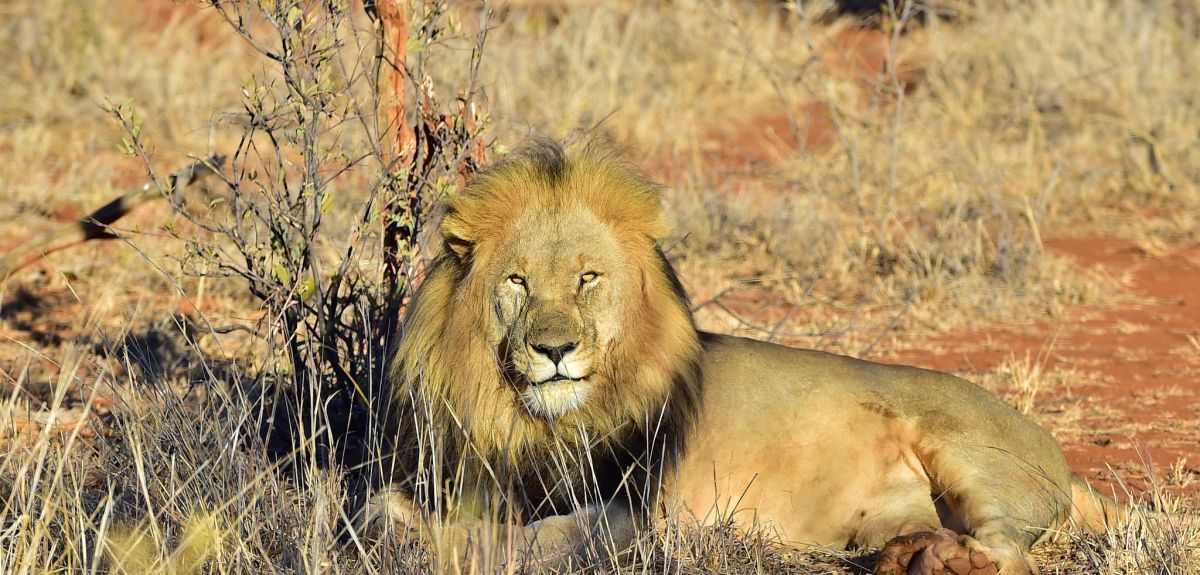
Image credit: South African Tourism (Flickr), Creative Commons
New study suggests half of lion populations will be lost in key regions of Africa
A new study involving Oxford scientists shows that lion populations in much of Africa are in rapid decline.
Published in Proceedings of the National Academy of Sciences of the United States of America (PNAS), the study estimates that lion numbers in West and Central Africa are declining sharply and are projected to decline a further 50% in the next two decades without a major conservation effort. Lion numbers are also declining, albeit less dramatically, in East Africa, long considered the main stronghold of the species. The study also shows that almost all lion populations that historically numbered at least 500 individuals are in decline.
A team of scientists from global wild cat conservation organisation Panthera, Oxford University's WildCRU, Grimsö Wildlife Research Station, IUCN Species Survival Commission Cat Specialist Group, and the Department of Ecology, Evolution and Behavior at the University of Minnesota estimated the trajectory of lion populations by compiling and analysing regional population trend data for 47 different lion populations across Africa. The analysis showed that whereas most lion populations in West, Central, and East Africa are declining, increases in lion populations occurred in four southern countries: Botswana, Namibia, South Africa and Zimbabwe.
Lead author Dr Hans Bauer of WildCRU said: 'These findings clearly indicate that the decline of lions can be halted, and indeed reversed as in southern Africa. Unfortunately, lion conservation is not happening at larger scales, leading to a vulnerable status of lions globally. In fact, the declines in many countries are quite severe and have enormous implications.
'If resources for wild lands cannot keep pace with mounting levels of threat, the flagship species of the African continent may cease to exist in many countries.'
Globally, lions are listed as Vulnerable on the IUCN Red List of Threatened Species, though the species is considered to be Critically Endangered in West Africa. The results of this study reaffirm the lion's conservation status in West Africa and further suggest that regional assessments yield a more accurate picture of lion populations than do global assessments. Based on the data, the authors recommend that the lion be regionally uplisted to Endangered in Central and East Africa, while populations in southern Africa meet the criteria for Least Concern.
Dr Luke Hunter, President and Chief Conservation Officer of Panthera and a co-author, said: 'We cannot let progress in southern Africa lead us into complacency. Many lion populations are either gone or expected to disappear within the next few decades. The lion plays a pivotal role as the continent's top carnivore, and the free-fall of Africa's lion populations we are seeing today could inexorably change the landscape of Africa's ecosystems.'
The authors note that conservation efforts in southern Africa are successful for a number of reasons, including low human density, significant resources, and perhaps most importantly, the reintroduction of lions in small, fenced and intensively managed and funded reserves. Dr Paul Funston, Senior Director of Panthera's Lion Program, said: 'If we don't address these declines urgently, and at a massive scale, the intensively managed populations in southern Africa will be a poor substitute for the freely roaming lion populations in the iconic savannahs of East Africa. In our view, that’s not an option.'
The study drew on the most comprehensive dataset so far compiled on the lion, which also informed the most recent Red List assessment of the species. Senior author Professor Craig Packer of the University of Minnesota, who also serves on Panthera's Scientific Council, said: 'Estimating future population trends requires sophisticated forecasting techniques, and we performed one of the most comprehensive statistical analyses of conservation status over such a large scale. The results clearly indicate the need for immediate action across most of Africa.'
The full paper, 'Lion (Panthera leo) populations are declining rapidly across Africa, except in intensively managed areas', appears in Proceedings of the National Academy of Sciences of the United States of America (PNAS).
 New study finds that ChatGPT amplifies global inequalities
New study finds that ChatGPT amplifies global inequalities
 Expert Comment: Chatbot-driven sexual abuse? The Grok case is just the tip of the iceberg
Expert Comment: Chatbot-driven sexual abuse? The Grok case is just the tip of the iceberg